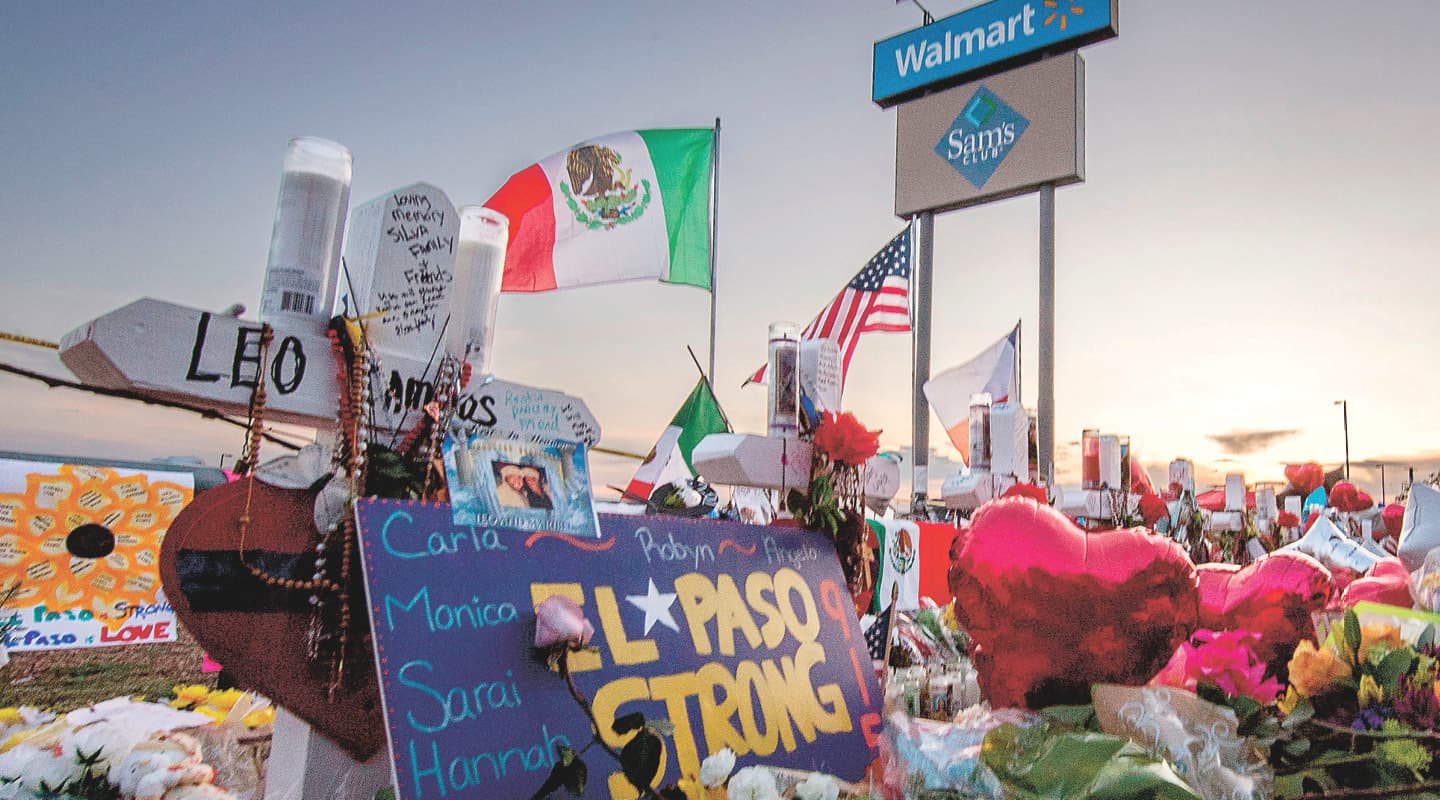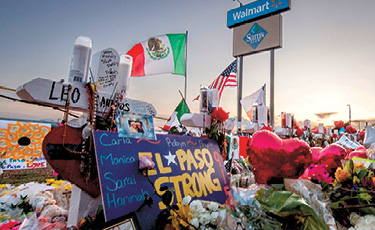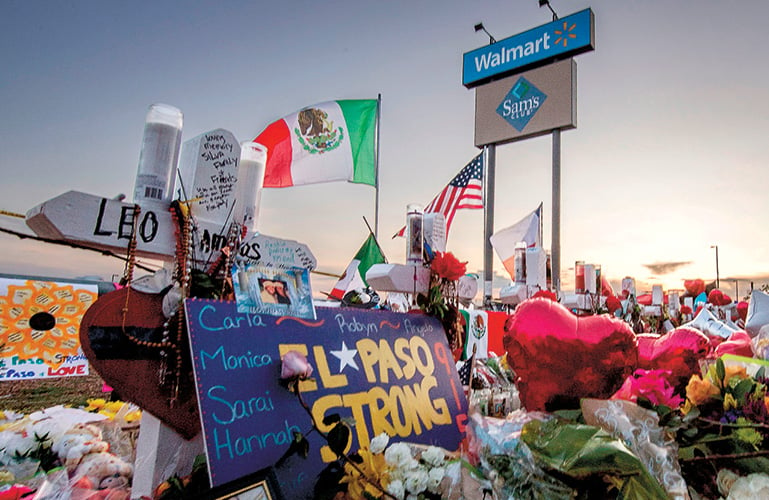In August, a gunman opened fire in a Walmart in El Paso, Texas, killing 22 people. Like many other mass shootings in recent years around the country—from Charleston, South Carolina, to Pittsburgh, Pennsylvania, to Roseburg, Oregon—this one was committed by a shooter with ties to white extremism.
Homegrown terrorism, including by white supremacists, is now as big a threat as terrorism from abroad, law enforcement officials say. But the shooting in El Paso—the largest domestic terrorist attack against Hispanics in modern history—has made it glaringly clear how poorly prepared the country is to fight it.
In August, a gunman opened fire in a Walmart in El Paso, Texas, killing 22 people. Like many other recent mass shootings, from Charleston, South Carolina, to Pittsburgh, Pennsylvania, to Roseburg, Oregon, this one was committed by a shooter with ties to white extremism.
Homegrown terrorism is now as big a threat as terrorism from abroad, law enforcement officials say. And that includes attacks by white supremacists. The shooting in El Paso is the largest domestic terrorist attack against Hispanics in modern history. It has made it very clear how unprepared the U.S. is to fight homegrown terrorism.



